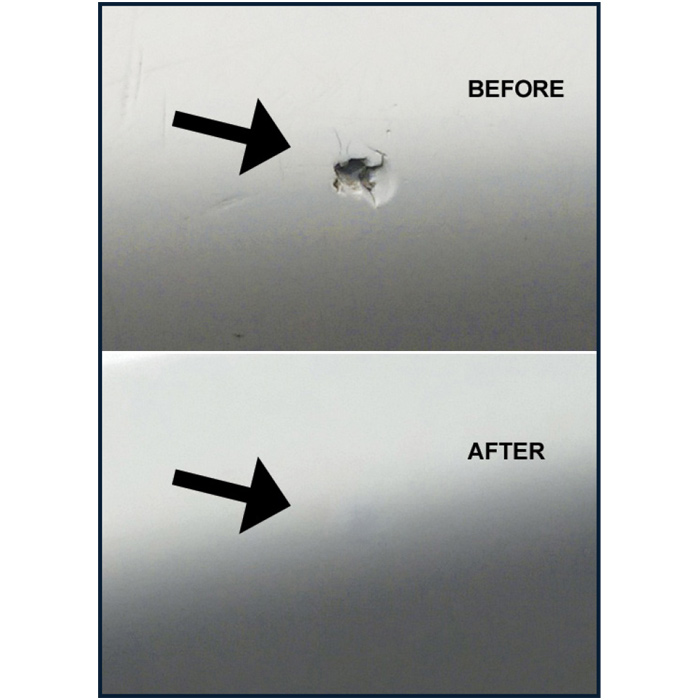Gelcoat Chip Repair
Posted By admin On 21/05/18During scraping off the antifouling (many years worth) I have found chips and small gouges and have caused a number of scratches with the scraper. Some of the scratches are through the gelcoat into the GRP. Must ALL damage be filled with gelcoat filler or can some of the minor scratches be left to be. Apr 13, 2014 The Hull Truth Boating and Fishing Forum *THE HULL TRUTH is the world's largest FREE network for the discussion of Boating & Fishing. Gelcoat chip repair. After hitting a rock in the lake last summer, we perform cosmetic repair to the Fiberglass Gel Coat on the. Nov 29, 2010 Re: Gelcoat chips on the bow. You could do this yourself with about $50-100 and a sander. Purchase a gelcoat repair kit for around $30.
Repairing cracks, scratches, and dings in gelcoat is a fairly straightforward matter, and it can make your boat look years younger. Last month I detailed methods of restoring the shine to dull and faded gelcoat in. Unfortunately, a loss of gloss is not the only damage fiberglass sustains. Everyone who has ever taken a boat to a dock knows that scratches are a risk. Gelcoat can also crack like plaster or craze like porcelain.
In some cases it evens flakes off like bad paint. Fortunately, all of these conditions can be repaired. Scratch Repair The most basic repair to gelcoat is filling a scratch.

If you can do this successfully, you are well armed to make all other gelcoat repairs. Scratches are repaired by filling them with fresh gelcoat. Except for color matching, the process is as straightforward as it sounds. You cannot repair a scratch with gelcoat resin anymore than you could repair it with paint. The Risk Taker Kira Sinclair Epub To Mobi. To fill the scratch you need a thickened form of gelcoat, called paste.
Scratch-repair kits containing a small amount of gelcoat paste and hardener along with a selection of pigments are widely available for less than $20. When it comes to matching gelcoat colors, white is the easiest shade to work with. Color Matching Even professionals who do gelcoat repairs daily can have difficulty getting a perfect color match. Condition yourself to be content with a self-assessment of 'not bad.' You can buy gelcoat paste in 'factory' colors instead of using a kit that requires you to mix the color using supplied pigments—but if your boat has spent a few years in the sun, even factory colors won't match exactly. The solution is an adjusting kit— a selection of pigments.

For small repairs to white boats, the generic kit is probably just as good. Color matching is much easier with white, and once the repair is buffed out to a gloss, small shading differences will be unnoticeable. Matching colored hulls is more difficult. A house-paint color-sample card that closely matches your hull can provide valuable help. The paint-store custom mixes the color by adding tints to a white base, so ask the clerk for the formula. It may call for a half-dozen different tints, but the important ones are those specified in the largest quantities. Use the tints in your kit to approximate the formula.
Put exactly one ounce of paste into a mixing cup and add tints a drop at a time. Keep track of the number of drops of each tint.
When the color looks close in the cup, touch a drop of the mix onto the hull. Make needed adjustments until you are satisfied with the match—don't expect perfection—then write down the formula so you can duplicate it for the rest of the paste. Color the gelcoat before you add the catalyst. Jetaudio Plus Vx Free Full Download. As a general rule, four drops of hardener will catalyze 1 ounce of resin at 1 percent, but follow the instructions in the kit. Stir in the hardener thoroughly; if you fail to catalyze every bit of the resin, parts of the repair will be undercured.
The mix shouldn't start to harden in less than 30 minutes. Always err on the side of too little hardener. Because polyester resin shrinks when it cures, you should leave a little excess paste on your repair to ensure full coverage. Applying Gelcoat While the original gelcoat is chemically bonded to the underlying laminates, the bond between the gelcoat paste and the long-cured hull is going to be strictly mechanical. To give the paste something to grip, sand wide scratches with 80-grit paper near the cracked or crazed area. Open narrow scratches into a shallow V by dragging the corner of a screwdriver blade through them. And remember to clean the scratch with an acetone-dampened rag before you attempt to fill it.
When you have the colored and catalyzed paste ready, wipe the scratch with styrene. This is to reactivate the old gelcoat, at least partially, which we hope will result in some chemical cross-linking. Now apply the paste like any other putty, using a plastic spreader. Because polyester resin shrinks slightly as it cures, let the paste bulge slightly. You are going to sand the patch fair anyway, but don't make the bulge excessive or you will create extra work for yourself.